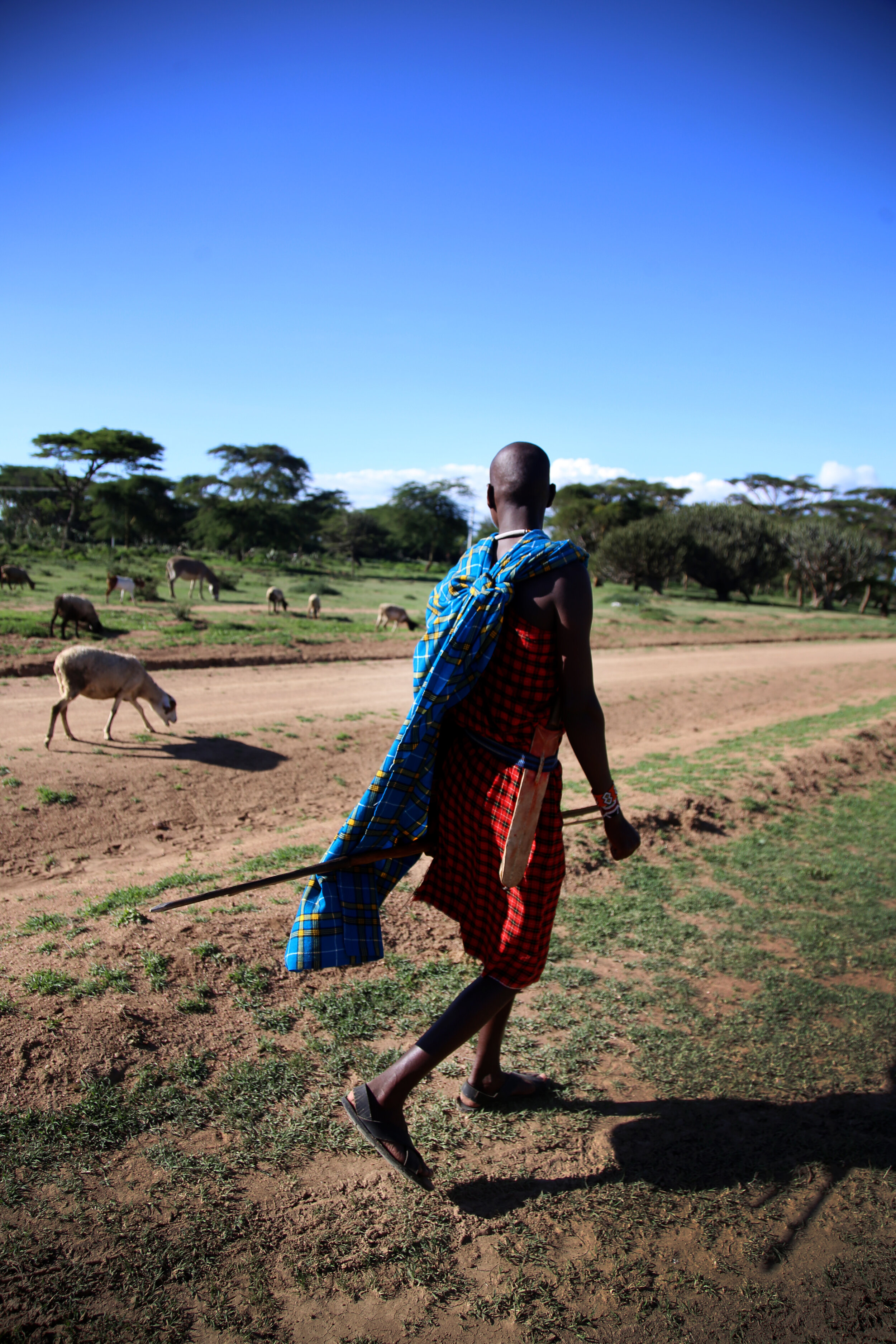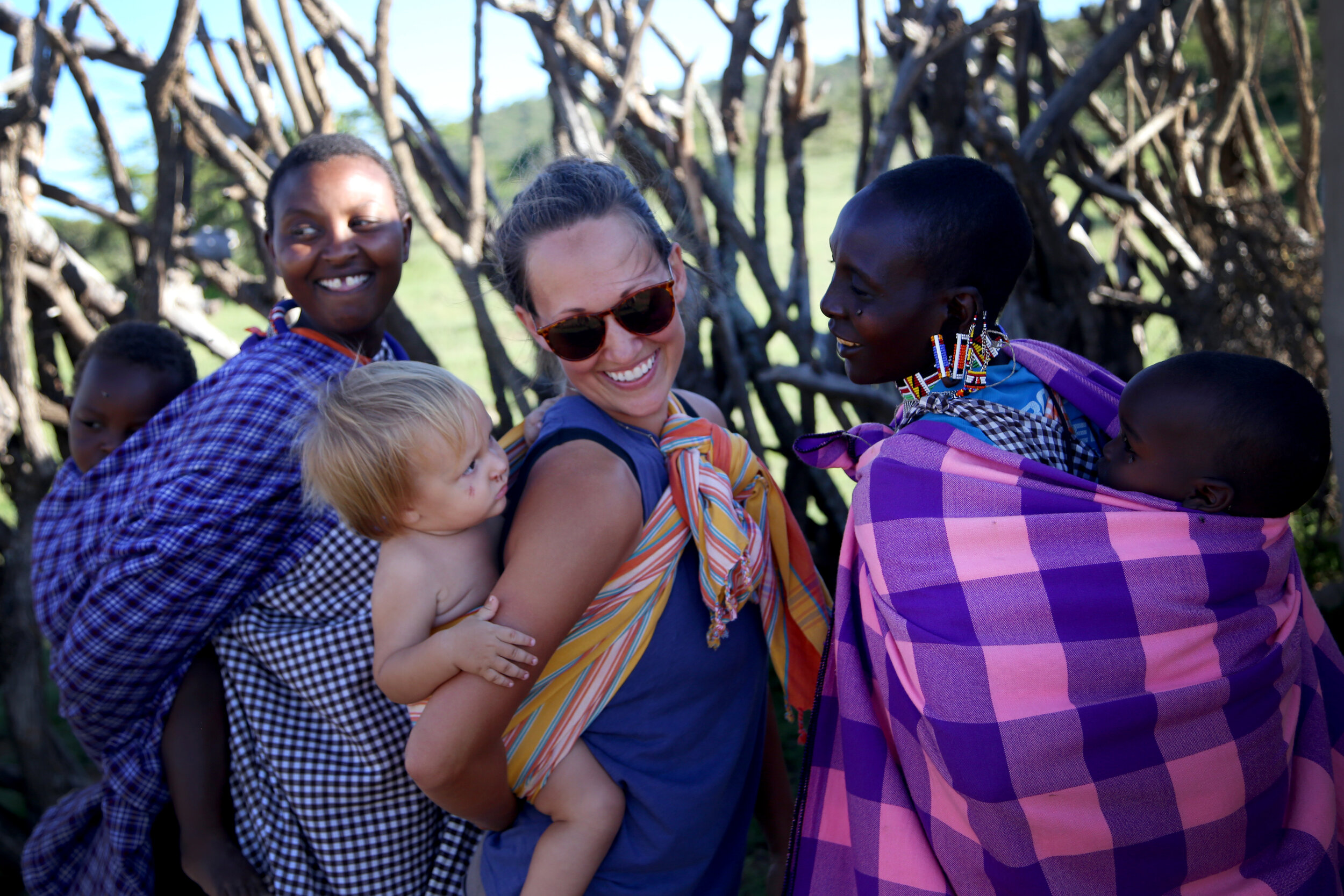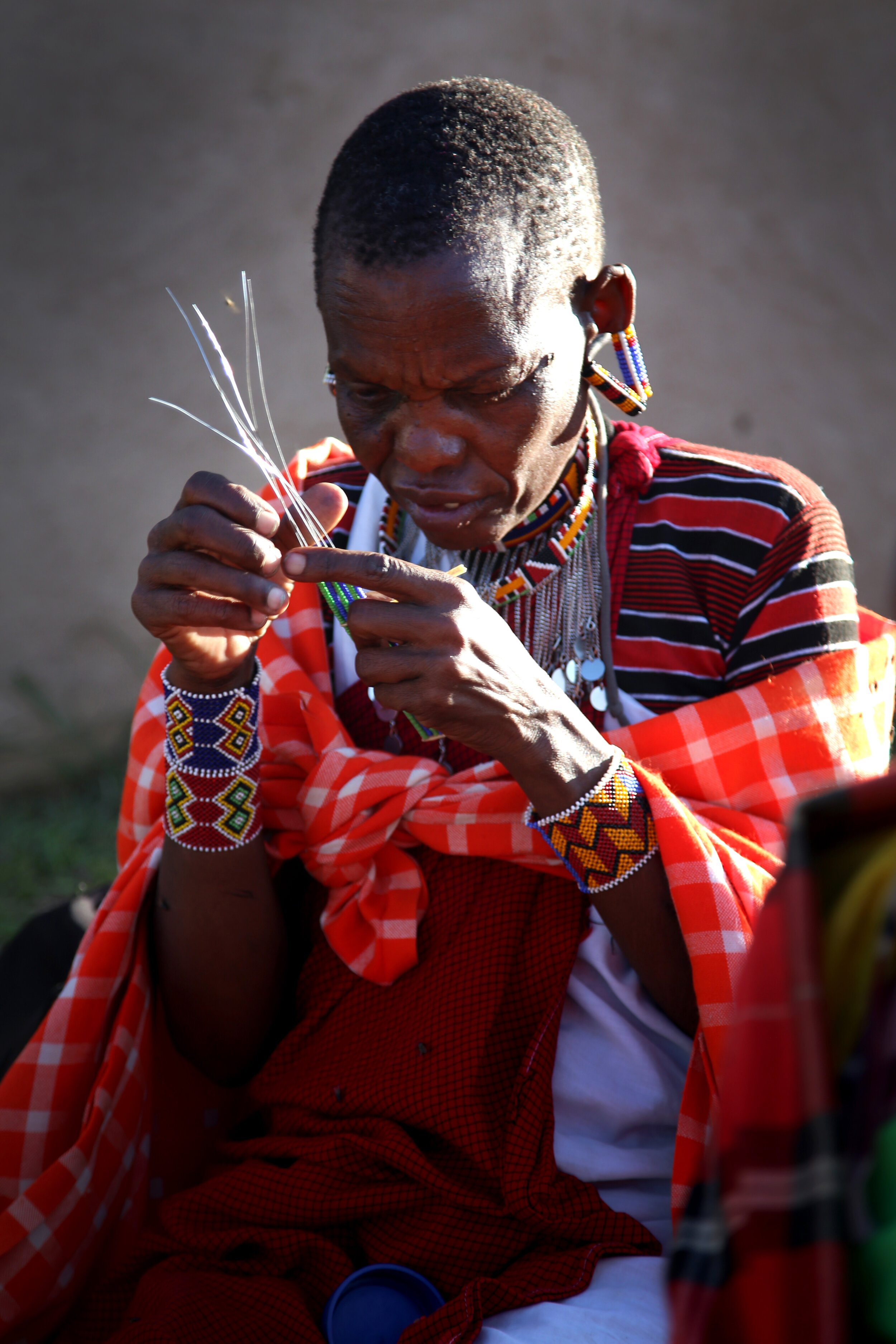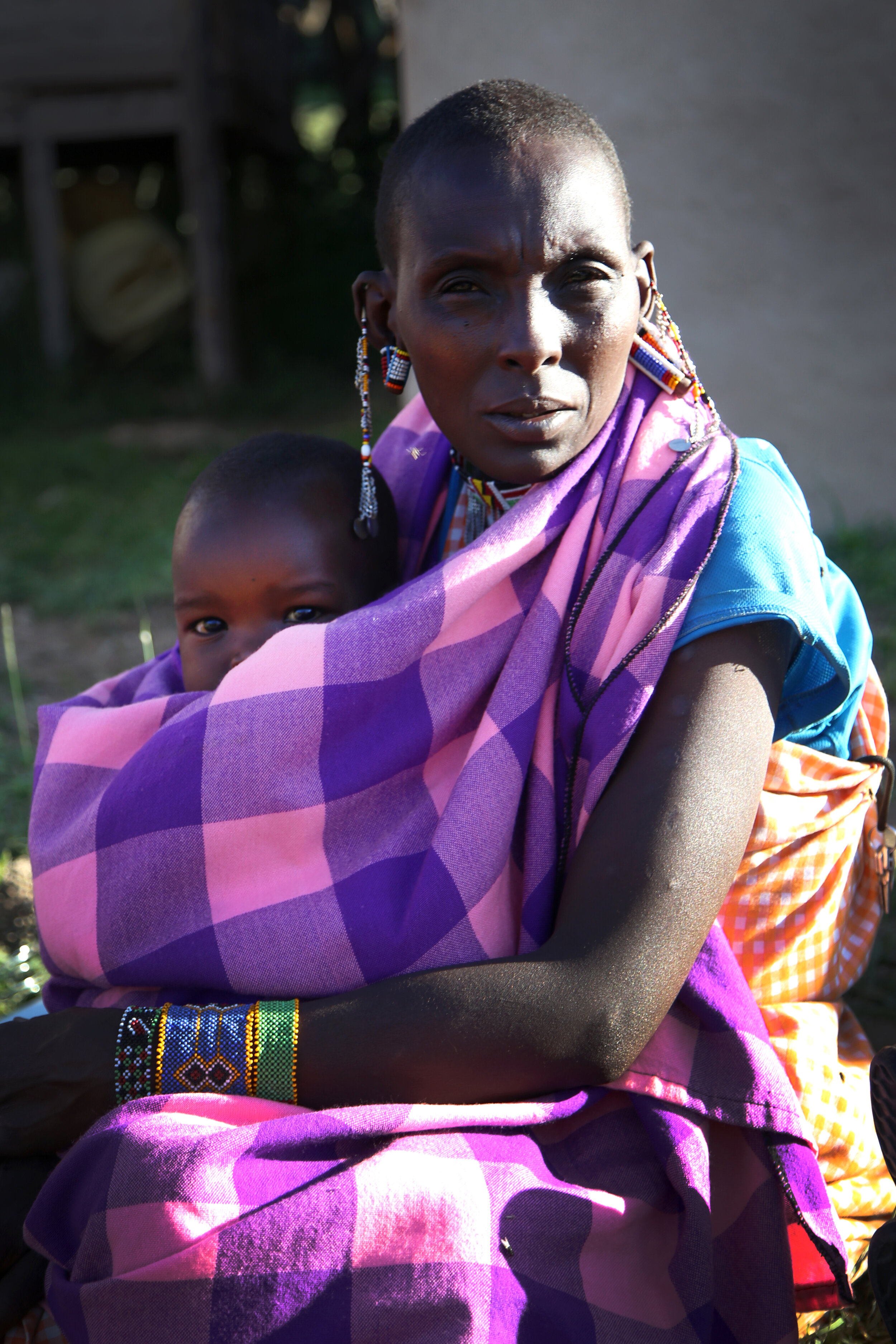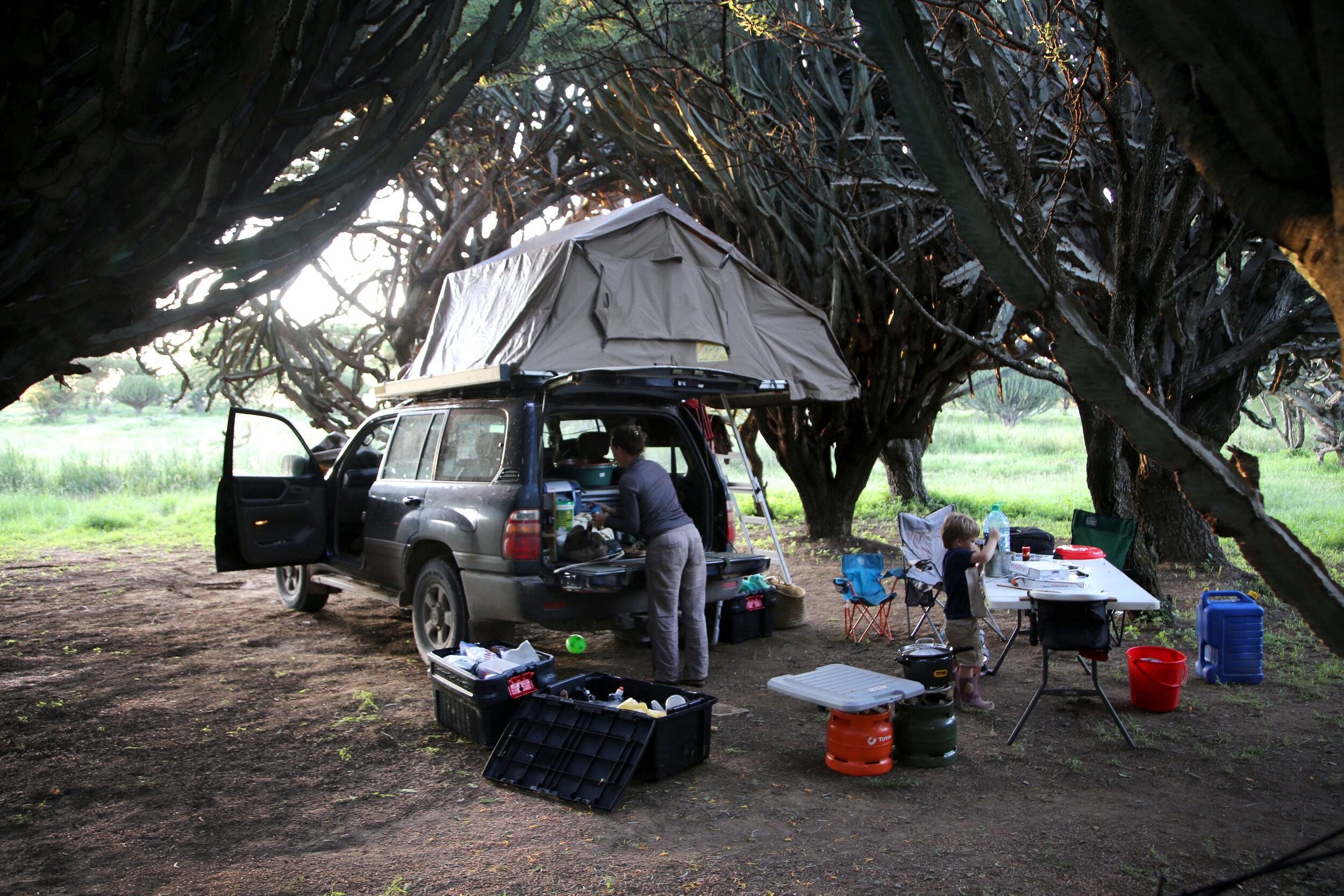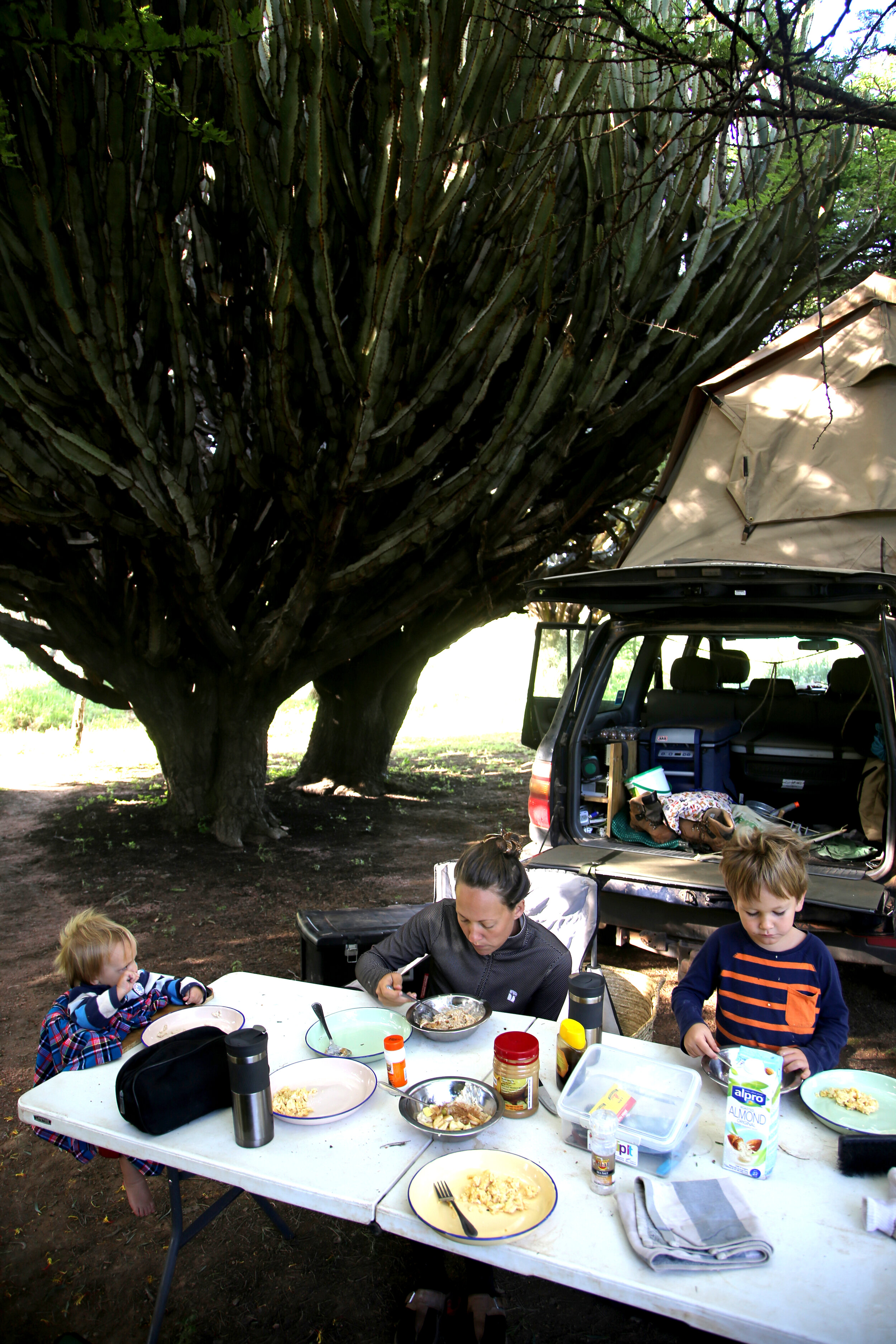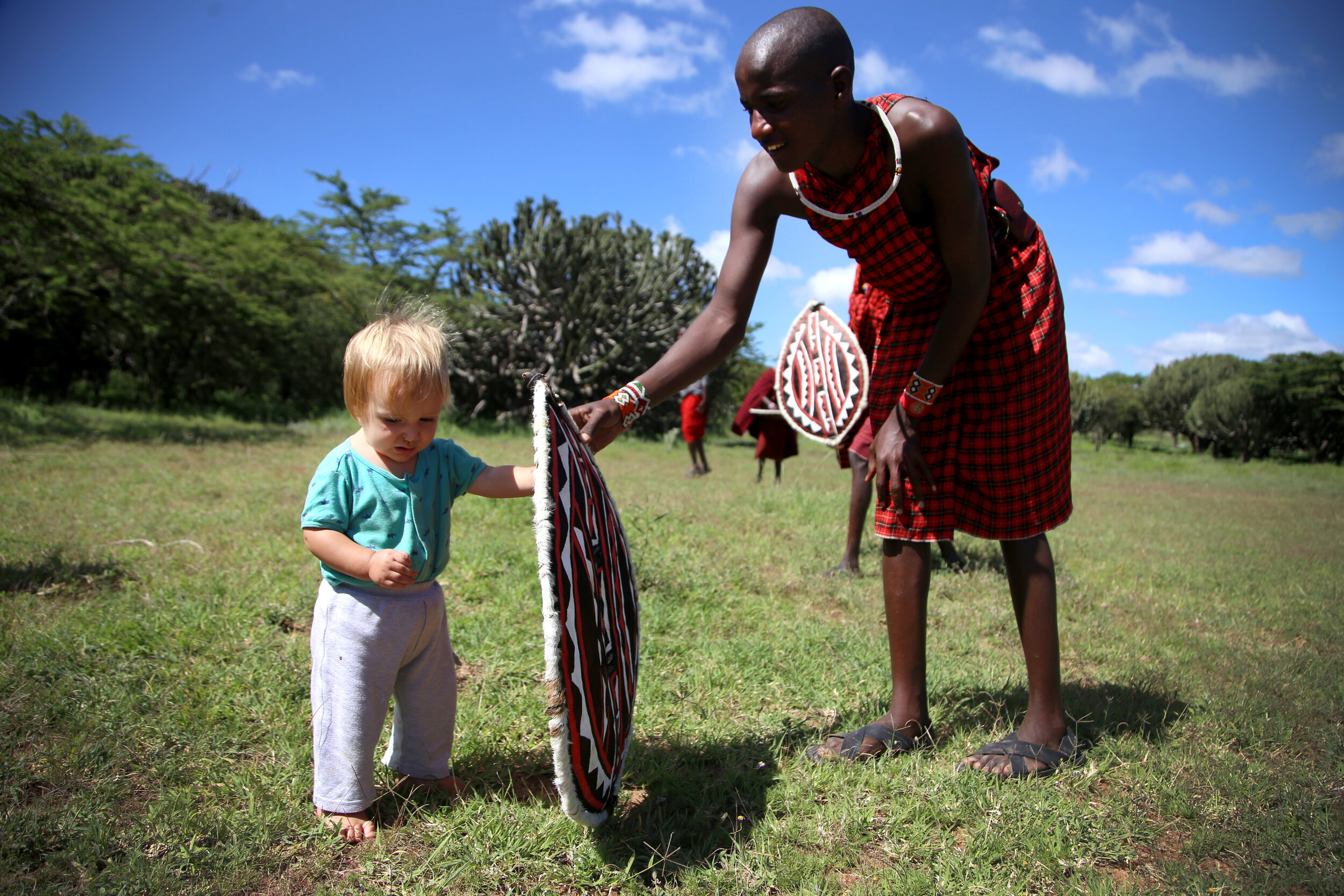We rang in the New Year with friends in Nairobi and a short respite from the wild. We spent only one night in Nairobi, just long enough to watch the New Year roll in and restock our food and supplies. We managed to combine our shopping trip with a breakfast date with Leo’s old teacher, whom he once said he would like to marry, and whom he greatly missed since her move from Kampala to Nairobi. After breakfast together, Leo and his teacher played in a bouncy castle at a mall while we did our shopping and then we were on our way once again.
We had our sights set for the infamous Maasai Mara, but decided to stop for a night along the way at Maji Moto Eco Camp - a friendly, welcoming place run by the local Maasai people. Now, I have unfortunately previously taken part in cultural tourism that felt exploitative when I was taken to a village by outsiders where the villagers put on a show for us tourists who gaped and took pictures. I was weary of duplicating this experience, but was encouraged by the reviews online and the fact that Maji Moto was completely run by Maasai.
We were not disappointed. This stop ended up being one of the highlights of our trip for the kids, as our hosts were so welcoming and friendly and included the children in some very simple, but engaging activities. Upon arrival, our guides gave Leo a bow and arrow, which he treasured for the rest of the trip. We set up camp under the huge candelabra cacti, and then our hosts took us for a walk down to their natural hot spring (Maji moto means “hot water”), from where they pumped water for the showers. We had two guides, who encouraged all of our questions about their culture, traditions, and their land. We felt genuinely welcomed and taken in by our hosts. Nothing felt like a show, but instead it was a genuine welcoming by a people who are proud of their culture and traditions and who want to share them with others.
From the hot spring, we were led to the women’s village, where several widows lived with their children and made a living by selling their handwork - jewelry and other wares made with the exceptional, traditional Maasai beadwork. The women had a special greeting for me, the only other woman. They greeted me by putting our arms on each others’ shoulders while we swayed back and forth in song. In these cross-cultural experiences, I always love meeting other mothers. No matter the language or cultural barrier, motherhood is motherhood and babies are babies. There is an instant understanding and respect for what it takes to raise a child. There were a few mothers with babies and we laughed as they peeked at each other over our shoulders while strapped to our backs.
We returned to camp to make dinner and after we ate, a group came to make a fire for us. This was not unusual, as the managers of each camp site would make a fire to keep wildlife away. This time, however, a group of about 6 people came to make the fire and invited us to watch how they started the fire without matches. We watched as they quickly rolled a stick of hardwood between their hands, set on their machetes and a piece of soft wood. They passed it one to the other as each one’s hands got tired, until we saw a small puff of smoke. Here, they brought in a small bunch of grass and kept at it until they had a spark. It took the group about 5 minutes to start the fire and then they let Leo have a go at it. He was enthralled.
We later sat around the fire and I asked questions about how they raised their children, about their diet, and other traditions. This was a valuable time for me, as i often keep the question: "How have humans done [X] throughout the history of humanity?” in the forefront of my mind when making decisions about my own life. With this question, I find that many of our modern “essentials” are certainly modern and are not exactly essential. In our generation, for example, we almost cannot fathom raising children without iPads, but of course these have only existed for about a decade and hundreds of generations of children were raised without iPads, so it’s hard to conclue that they are essential.
Part of the appeal of this trip through Kenya, for me, was to visit the land where humankind was born. In a sense, visiting the Great Rift Valley is a homecoming for anyone, as we can all trace our DNA lineage back to the early homo sapiens who came from this region. To have the opportunity to witness a people who have undoubtedly changed since those early days, but still live a semi-nomadic lifestyle and are still incredibly connected to this ancient land, was an immense privilege. When we first planned our trip, I hoped to visit Northern Kenya and witness the other traditional people groups up there - the Samburu, Turkana, and others. I am simply enthralled by these people. To think that these people groups continue to live lifestyles more closely-resembling our ancestors than any other people in our modern world, made me immensely grateful for this opportunity to glimpse their lives and ask questions.
As we sat around the fire, I thought I would share a tradition and food from my own culture, so I brought out our marshmallows to roast. A few of our friends tasted the sticky, sweet treat and could not take more than one bite, as it was too sweet for them. I felt embarrassed at my poor offering, recognizing that foreigners have brought goods to Africa for centuries, confident that their ways were better when, in fact, they were often unhelpful and even hurtful. What good is a marshmallow anyway? There is nothing healthy or good about it for those who do not crave its sweetness.
We stayed only one night at Maji Moto, but since we didn’t have far to drive the next day, we were able to spend our morning exploring more of their land. Two more guides took us up a rocky hill and Leo bounced along beside them, happy for the opportunity to run and climb. Raising my children in Africa, I often admire how parents will allow their children to roam and play without fussing about their safety constantly, but I also often find that same sense of nonchalance does not transfer over to white children. I had rebuffed our guide the day before, when she worried about Pax with bare feet on the ground. “Don’t you allow your children to go barefoot?” I asked. “What is the difference?” She laughed and admitted that they think perhaps white children are not as tough, but she also took the cue to leave my children to explore where they will, with the same standards as their own children. And so our guides on this walk became some of the few adults who truly allowed Leo to push his physical limits. He found a large slab of stone, laying at about a 45 degree angle, and climbed it proudly as, I admit, my heart pounded. He followed the Maasai man up to the top of the hill, crowned by large stone, and looked down in excitement at the land below us while I tinkered behind him and Eric handed Pax up to me, who was tired from the walk and wanted some milk for refreshment.
When we came back down the hill, we packed up to go, but our hosts would not let us leave without one final activity - “warrior training.” They brought out their shields and cut off pieces of sisal, which they good-naturedly threw at one another, flying them through the air with a fuft fuft fuft sound, before they either landed in the grass behind them or fell with a thud on the painted leather shields. After witnessing the fun for a few minutes, Leo picked up a shield, too, and threw a few sisal sticks of his own. They took it quite easy on him.
After their games, the men sang us a farewell song and regaled us with their impossibly-high jumps, sending us off with the unforgettable image of their bright red cloth set against the blue sky.








